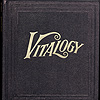guitar tuning help

MissYouAllDay
Posts: 939
Hi guys. I have like a 30$ electric guitar tuner. It can only tune to the names of the strings (Eadgbe) so I was learning all or none last nigth (a sweet song to play and learn btw) and I have to tune my low E to a C# or something like that. Is there anyway I can tune it using the tuner I have? And is that the c# above or below low E?
Final question is this. In general with notes, the lower the note the higher the letter right? Like assuming they are all in the same octave from highest to lowest would be: a b c d e f g
am I right about that?
SOrry guys I haven't taken any theory since grade 9 band
Final question is this. In general with notes, the lower the note the higher the letter right? Like assuming they are all in the same octave from highest to lowest would be: a b c d e f g
am I right about that?
SOrry guys I haven't taken any theory since grade 9 band
I miss you already, I miss you always
I miss you already, I miss you all day
I miss you already, I miss you all day
Post edited by Unknown User on
0
Comments
-
you'd need a chromatic tuner that can read to any note.
and it would be the C# below E.
and in that octave, A would be the lowest, G the highest.0 -
Just fret the E string at the third fret and tune it down to E. That will then be 1-1/2 steps down.E. Lansing-98 Columbus-00,03,10 Detroit-00,03 (1&2),06, 14 Cleveland-03,06,10 Toledo-04, Grand Rapids-04,06 London-05, Toronto-05, Indianapolis 10, East Troy (1&2) 11, Chicago 13, Detroit 14
https://www.facebook.com/aghostwritersapology/0 -
Well, as far as scales go... it depends on what root note you tune your instrument to. Pianos are rooted in C, guitars (in standard tuning) are rooted in E, most orchestra strings are rooted in C. A is typically the reference tone, and the most common tuning is A=440 Hz. Everything is then tuned in reference to that note. Scales are a circular relationship; that is, the notes repeat and repeat as you go up or down, just in octaves. So, on a piano keyboard you go C, c#, D, d#, E, F, f#, G, g#, A, a#, B, C, c#, D... etc... where the capital letters are white keys and lower-case are black keys. So, if the octave you refer to begins with A and ends with G, then the lower letter is the lower note. If you are talking about a C-scale, though, G is lower than A (C, D, E, F, G, A,
 . Hope that's not too confusing...
. Hope that's not too confusing...
Now, if your tuner is specifically designed for guitar notes in standard tuning, you can't really tune it to C#. The best you can do is tune to Db (D-flat), where you tune the string down to D and then go down a half-step from there. Db is the same as C#.
It's kind of odd that a $30 tuner doesn't include the full scale and sharps and flats... my $30 Korg tuner has the full chromatic scale....and if you don't like it, you can suck on an egg.0 -
What I would do is work out how many steps between C# and E is. C#, D, D#, E. thats 4 steps so fret the 4th fret and tune down, until the tuner shows a low E , then the string will be tuned to C#. I think that makes sence.Pearl Jam - London Astoria 20/4/06....One hell of a night

Reading 2006 - WOOOOW!!!!!
Paris 2006 - Fucking amazing
Wembley 2007 0
0 -
Originally posted by Gossard_Is_God
What I would do is work out how many steps between C# and E is. C#, D, D#, E. thats 4 steps so fret the 4th fret and tune down, until the tuner shows a low E , then the string will be tuned to C#. I think that makes sence.
Those are half-steps, cowboy... and that's three half-steps between four notes...
Each fret on a guitar represents a half-step (12 half-steps, 6 steps, in an octave). There are 8 notes in-key in one octave, kinda confusing. But on a guitar neck or piano keyboard, there are 12 increments between one note and the octave of that note.
But yes. If you tune the low E down so that, fretted at the third fret, it is an E... then open, that's C#....and if you don't like it, you can suck on an egg.0 -
Originally posted by mccreadyisgod
Well, as far as scales go... it depends on what root note you tune your instrument to. Pianos are rooted in C, guitars (in standard tuning) are rooted in E, most orchestra strings are rooted in C. A is typically the reference tone, and the most common tuning is A=440 Hz. Everything is then tuned in reference to that note. Scales are a circular relationship; that is, the notes repeat and repeat as you go up or down, just in octaves. So, on a piano keyboard you go C, c#, D, d#, E, F, f#, G, g#, A, a#, B, C, c#, D... etc... where the capital letters are white keys and lower-case are black keys. So, if the octave you refer to begins with A and ends with G, then the lower letter is the lower note. If you are talking about a C-scale, though, G is lower than A (C, D, E, F, G, A, . Hope that's not too confusing...
. Hope that's not too confusing...
Now, if your tuner is specifically designed for guitar notes in standard tuning, you can't really tune it to C#. The best you can do is tune to Db (D-flat), where you tune the string down to D and then go down a half-step from there. Db is the same as C#.
It's kind of odd that a $30 tuner doesn't include the full scale and sharps and flats... my $30 Korg tuner has the full chromatic scale.
Defer back to my above commentE. Lansing-98 Columbus-00,03,10 Detroit-00,03 (1&2),06, 14 Cleveland-03,06,10 Toledo-04, Grand Rapids-04,06 London-05, Toronto-05, Indianapolis 10, East Troy (1&2) 11, Chicago 13, Detroit 14
https://www.facebook.com/aghostwritersapology/0
Categories
- All Categories
- 149.1K Pearl Jam's Music and Activism
- 110.2K The Porch
- 283 Vitalogy
- 35.1K Given To Fly (live)
- 3.5K Words and Music...Communication
- 39.3K Flea Market
- 39.3K Lost Dogs
- 58.7K Not Pearl Jam's Music
- 10.6K Musicians and Gearheads
- 29.1K Other Music
- 17.8K Poetry, Prose, Music & Art
- 1.1K The Art Wall
- 56.8K Non-Pearl Jam Discussion
- 22.2K A Moving Train
- 31.7K All Encompassing Trip
- 2.9K Technical Stuff and Help


